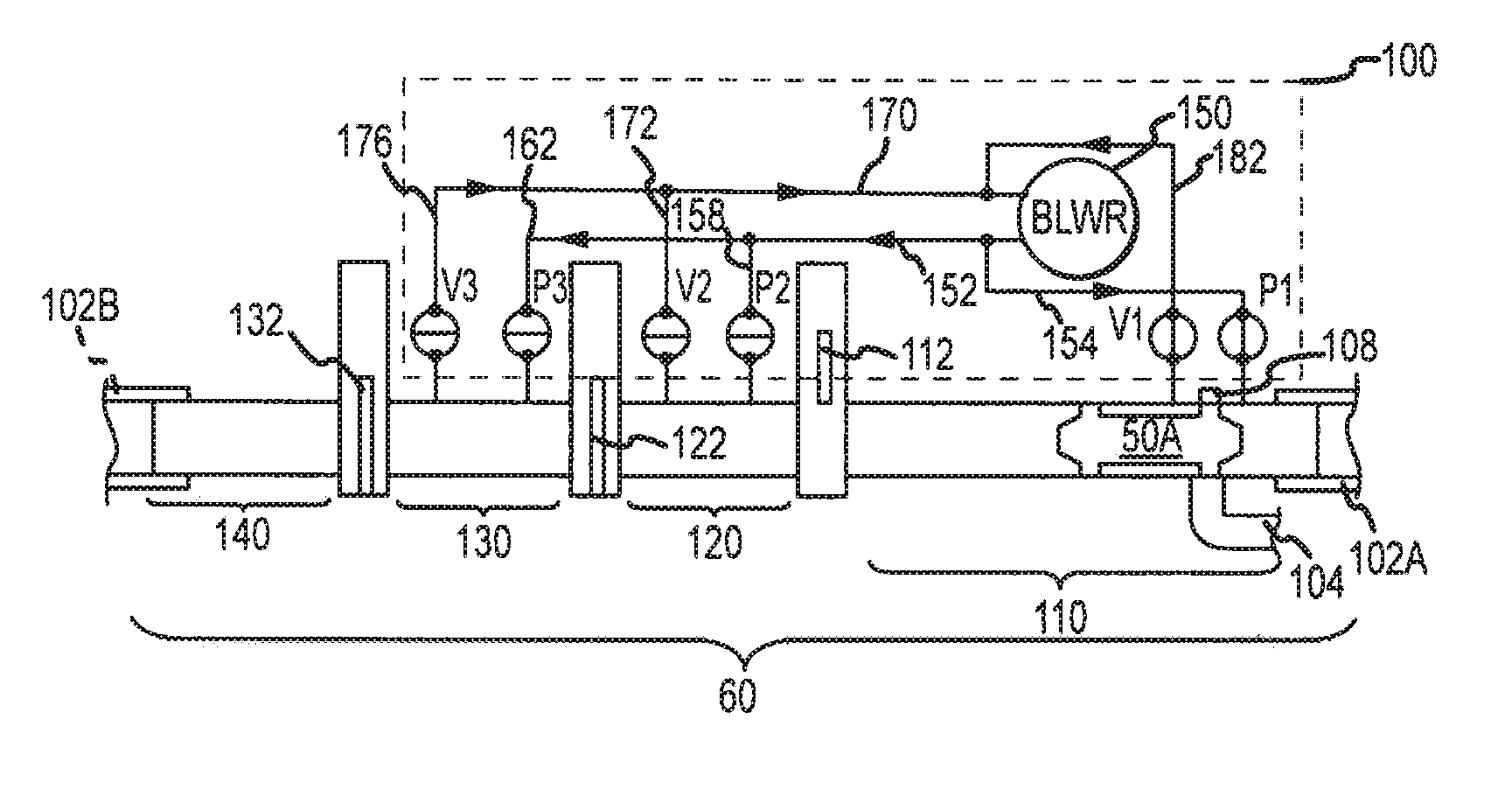Air powered storage device for pneumatic transport system
a technology of air-powered storage and pneumatic transport system, which is applied in the direction of conveyors, conveyors, transportation and packaging, etc., can solve the problems of requiring manual removal, affecting the flow of air, and causing more difficult situations, so as to facilitate the creation of pressure differentials and increase the pushing and/or pulling force
- Summary
- Abstract
- Description
- Claims
- Application Information
AI Technical Summary
Benefits of technology
Problems solved by technology
Method used
Image
Examples
Embodiment Construction
[0030]Disclosed in FIG. 1 is a system diagram for a pneumatic carrier system 10 within which the invention described herein is employable. In general, the pneumatic carrier system 10 transports pneumatic carriers between various user stations 16, 18, each such transport operation being referred to herein as a “transaction”. At each of the user stations 16, 18, a user may insert a carrier, select / enter a destination address / identification and a transaction priority, and then send the carrier. The system determines an optimum path to route the carrier and begins directing the carrier through the system.
[0031]Interconnected with each station 16, 18 is a transfer unit 20 which orders carriers arriving through different tubes from a different station 16, 18 into a single pneumatic tube. This pneumatic tube is further in connection with a vacuum by-pass transfer unit 21 (i.e., a turn around transfer unit) and a blower 22 that provides the driving pneumatic force for carrier movement. A se...
PUM
 Login to View More
Login to View More Abstract
Description
Claims
Application Information
 Login to View More
Login to View More - R&D
- Intellectual Property
- Life Sciences
- Materials
- Tech Scout
- Unparalleled Data Quality
- Higher Quality Content
- 60% Fewer Hallucinations
Browse by: Latest US Patents, China's latest patents, Technical Efficacy Thesaurus, Application Domain, Technology Topic, Popular Technical Reports.
© 2025 PatSnap. All rights reserved.Legal|Privacy policy|Modern Slavery Act Transparency Statement|Sitemap|About US| Contact US: help@patsnap.com



